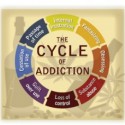Early Warning Signs of Domestic Violence
Close relationships expose partners to the very best and the very worst that each has to offer. While the occasional argument or disagreement can be expected within any ongoing relationship, abusive behavior towards another develops out of a misuse of power and control.
Domestic violence operates within a fear-based relationship structure that can be physical, sexual, social psychological and even financial in nature. Episodes of violence can be ongoing or occasional depending on the circumstances of the relationship.
While women tend to be victimized more often than men, anyone can become a victim under the right circumstances. Being able to spot early warning signs of domestic violence can help you take steps towards getting needed help and ensuring your safety along the way.
Domestic Violence Trends
Patterns of domestic violence tend to serve one overall purpose: to exert control over another for the purpose of getting one’s way. Whether it be through emotional insults, physical abuse or sexual assault, the abuser uses some form of coercion as a means for getting what he or she wants out of the relationship.
According to the Bureau of Justice Statistics, nonfatal domestic violence trends between the years 2003 and 2012 include the following:

The majority of domestic violence incidents occur between romantic partners.
- Domestic violence incidents accounted for 21 percent of all violent crime within this time period
- Violence between intimate partners made up 15 percent of domestic violence incidents followed by four percent for immediate family members and two percent for extended family members
- The majority of domestic violence incidents occurred between current and former boyfriends and girlfriends
- Women made up 76 percent of the victims in domestic violence cases
Call our helpline at 888-646-0635Who Answers? to see if your insurance will help pay your rehab costs.
Signs to Watch for
Domestic violence can develop under most any circumstance where there’s a marked imbalance of power of and control, regardless of age, income level, ethnicity or education level. People most at risk of becoming victims of domestic violence include:
- Someone with a history of abusive relationships
- Someone who’s planning to leave or has just left an abusive relationship
- People living with physical or mental disabilities
- Someone who was abused as a child
- Someone who witnessed domestic violence as a child
- Being unemployed
- Unplanned pregnancy
- Someone who’s become isolated from friends and family
Risk Factors
Relationships that hold a potential for domestic violence center around the abuser in terms of his or her choosing to use violence as a means for exerting control. According to the Indian Journal of Community Medicine, assumed gender roles and family structures, such as patriarchal versus matriarchal have some bearing over how the stronger partner goes about getting his or her way.
As far as the potential abuser goes, factors that increase the likelihood of violent behavior developing within the context of a relationship include:
- Someone who’s abused past partners
- Someone who abuses animals
- Someone who’s unemployed or underemployed
- Someone who abuses alcohol and/or drugs
- Someone who was abused as a child or witnessed domestic violence as a child
These circumstances introduce a certain degree of stress into a relationship, be it from past conditioning or current, extenuating circumstances. Under these conditions, elevated frustration levels greatly increase the likely an abuser will act out.
If you suspect you or someone you know may be seeing early warning signs of domestic abuse in your home and don’t know where to turn, please don’t hesitate to call our toll-free helpline at 888-646-0635Who Answers? to speak with one of our phone counselors.










